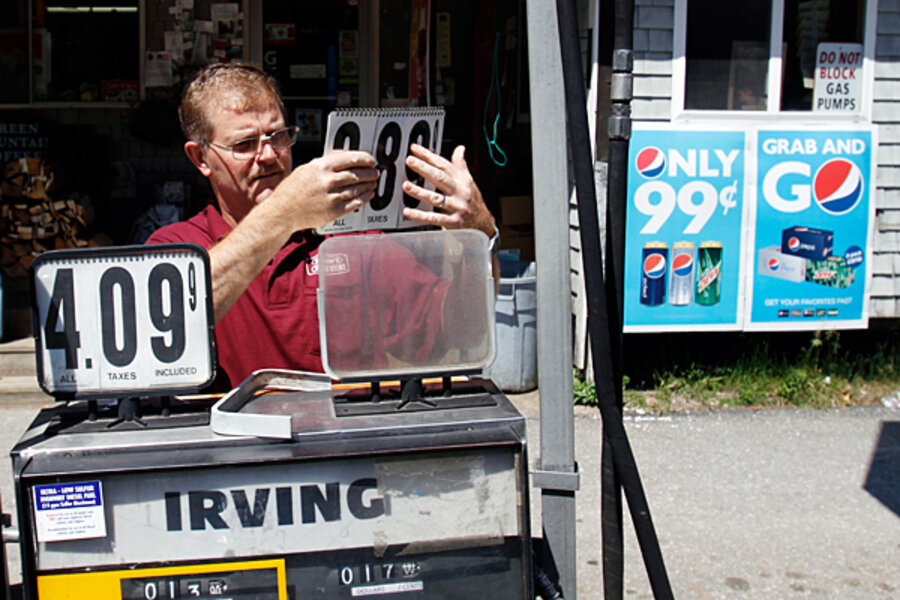Oil prices go up, but gas prices go down. What's going on?
Loading...
| New York
Only a week ago, the Obama administration surprised the oil markets by announcing the release of oil from the Strategic Petroleum Reserve.
Initially, the price of oil fell by almost $4 a barrel. But since then, oil prices have rebounded back to their pre-announcement levels – about $95 a barrel.
What’s happened?
The oil markets, energy analysts say, are beginning to reflect some broader economic shifts taking place in the world economy – ranging from some indications of economic vitality in Japan to some predictions that the US economy will pick up in the second half of the year. In addition, the apparent resolution of the Greek debt crisis, even if only in a temporary measure, has ameliorated some concerns about another credit-led recession.
“Any event except a double-dip recession has a bullish cast to it,” says Sarah Emerson, president of Energy Security Analysis Inc. in Wakefield, Mass.
One clear indication of the strength of the oil market should come shortly when the Department of Energy announces which bids it will accept, at what price, for 30 million barrels of oil – the US share of the petroleum-reserve release. (The International Energy Agency is also releasing 30 million barrels.)
After hurricane Katrina disrupted oil in the Gulf of Mexico in 2005, Ms. Emerson recalls, President Bush released 30 million barrels of oil from the Strategic Petroleum Reserve. But the oil industry chose to bid on only 11 million barrels, indicating that demand wasn’t high.
“We may not need the oil now,” she says. “If the auction is underperforming, do they ask for more bids in July?”
On Wednesday, the Department of Energy released data that showed a decline in US inventories of crude oil and gasoline. “We had imports down a little; refinery runs were down a little bit,” says John Kilduff, founding partner of Again Capital, which trades commodities in New York. “It does not necessarily mean there was stronger demand for oil.”
While the price of oil has moved back up, the price of gasoline has continued to drop. In the past week, the price at the pump has gone down another 7 cents a gallon, with the national average now about $3.54 a gallon, according to AAA, the motorists’ club. The price of gas is now about 44 cents a gallon lower than its peak in May, but it’s still about 80 cents a gallon more expensive than last year.
AAA is projecting a 2.5 percent decline in Fourth of July travel compared with last year as a result of the higher fuel prices. “Increased fuel prices are also responsible for a shift in the demographics of the typical Independence Day traveler, as higher prices impact lower-income households more significantly,” says Glen MacDonell, director of AAA Travel Services.
Then again, gasoline prices have almost bottomed out for the summer, Mr. Kilduff says. “We need crude oil below $90 a barrel to sustain these levels,” he says. On Thursday, the price of crude was about $95.65 a barrel on the futures market. “The daily price declines at the pump will come to a screeching halt,” he says.
However, Emerson says, some other dynamics might keep oil prices in check in the second half. “What if Libya comes back?” she asks. “What if [Muammar] Qaddafi loses power? The opposition can get oil up and running pretty quickly.”
Once Qaddafi is gone, Kilduff says, the price of oil will fall between $3 and $5 a barrel. “I think we’ll see a resolution in Libya in the next 30 to 60 days,” he says.





